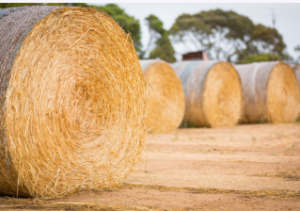Baling twine, commonly called binder twine, is used to secure bales of hay and other agricultural products. Depending on its purpose, this durable cordage may be made of various materials like sisal or polypropylene.
 Natural baler twine, commonly called “sisal,” is produced from fibres from sisal plants. Hay producers frequently opt for sisal due to its strength, affordability and resistance against rotting when in contact with hay.
Natural baler twine, commonly called “sisal,” is produced from fibres from sisal plants. Hay producers frequently opt for sisal due to its strength, affordability and resistance against rotting when in contact with hay.
It’s great for tying boots.
Baling twine from www.unipak.com.au/baling-twine is a durable cord made of string used to wrap and tie together items such as hay bales, paper products and recyclables. Usually sold on spools and rolls to be used by machines designed specifically to handle this task, its composition may include natural fibres like sisal and manufactured synthetic materials.
Baling twine is most frequently used for bundling items together to be easily stacked and stored, repairing fences, or attaching tractor parts. There are various weights and strengths of baling twine available.
Baling twine typically ranges in tensile strength between 95 and 325 psi, making it suitable for baling hay and binding other items like straw, plastic or wood. Baling twine can be made from natural and synthetic materials and comes in many different colours.
PVC pipe provides an attractive alternative to bale wire, which is difficult to come by in larger quantities. PVC is easier to handle and install, can be recycled when necessary and offers greater affordability than its counterpart – all factors that may make PVC more appealing than bale wire for many farmers and ranchers.
When purchasing baling twine, make sure that it provides a minimum number of feet per carton – this allows you to reload your baler without purchasing extra twine than necessary.
Polypropylene baler twine is an economical, strong option that won’t rot or mildew; sisal baler twine provides another natural fibre option with strong biodegradation over time and high tensile strength, ideal for baling.
Baling twine is an invaluable commodity that has multiple uses around the farm. From hanging up your horse tack or other goods to creating hammocks for extra seclusion on your farm property – baling twine can do it all and more.
It’s a great makeshift lead rein.
Baling twine from www.unipak.com.au/baling-twine is an exceptionally versatile product, used to repair fences, reattach tractor parts and tie down livestock feed bales – it can even serve as a halter or lead rope!
If you have extra baling twine in your stable, collecting it and seeing what can be done with it may be worthwhile to save both time and money! There may be numerous opportunities out there that will benefit both parties involved!
Baling twine is one of my go-to materials for creating makeshift lead reins. Tie it around your dog’s collar or yourself, and you have an easily detachable lead!
Attach the rope to your pony’s front legs so they won’t slide on the ground as he walks. It can be especially helpful when taking him into wooded areas.
Baling twine is an excellent makeshift lead rein, as it requires minimal space. If your pony has loose neck and head areas, tying their lead rein directly from their bit through their D rings is all that’s necessary – simple!
This convenient lead rein can fit easily in your pocket or purse, giving you peace of mind knowing it will always be at hand when needed!
Baling twine can also be an effective sweat scraper to remove excess water from your horse. Gather a few strands, ball them up, and you have an instant scrubber!
It’s a great hammock.
No matter your desired activity – from napping and reading to relaxing and sipping lemonade – baling twine hammocks offer the ideal way to unwind. They are durable, strong, and easy to set up and take down – which is especially convenient for hikers or climbers who don’t add extra weight when backpacking.
These lightweight, portable hammocks can be found at most outdoor stores and come in an assortment of sizes – from small to extra-large – with tree straps for quick installation on trees or posts.
For optimal results, select sturdy trees at least 10 to 15 feet apart that can support the weight of both you and the hammock without bending or breaking. If this option doesn’t exist, hang the hammock between two sturdy posts instead.